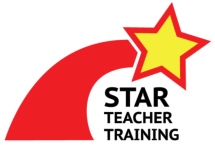One of the most common questions about EFL classroom management that I get from new teachers is how to keep students, especially boys, in their seats for a whole lesson. My answer is that they shouldn’t. The fact is that children’s bodies are growing and full of energy. It just isn’t reasonable to expect children to sit for long periods of time. We need to instead accept reality and help our students succeed by riding the roller-coaster in our lessons.
Riding the roller-coaster is the idea that lessons need both high (stirring) and low (settling) energy activities loosely alternating throughout to balance our students’ energy. Once you can include both stirring and settling activities in your lessons you’ll find your preschool and primary school EFL students are much better behaved and able to focus.
The Need for Movement in EFL Classroom Management
If you ever sit and watch children you’ll quickly notice that they’re always on the move. They’ve got tons of energy, a desire to explore, and their brains’ need to learn how to better move their fingers, legs and arms.
Unfortunately, schools regularly require children to sit in uncomfortable chairs for hours on end with very few opportunities to move while they do settled activities. Teachers then wonder why their students squirm around in their desks, play with toys, or even ask for water and bathroom breaks. Many times the kids are just trying to get up and get a break from sitting.
Stirrers and Settlers
Stirring activities are ones that are high-energy and get kids moving or talking. These activities include songs like “Walking Walking“, Drill Sergeant, Flashcard Safari, Stand Up/Sit Down, Listen Quick, Speed Speak and even Volume Drilling or fast chants.

All of these let students move around, talk a lot, or work off some excess energy. The kids don’t need to run around or play intense games to get what they need. Just moving their arms and twisting in their chairs is often enough.
Settler activities are generally quiet and don’t involve movement or energy. Many common lesson activities such as book work, worksheets, reading, listening to the teacher, and watching videos are settling. This also includes other activities like Lip Reading, Coloring Dictations, and Spelling Dictations. Even some songs, such as this “I Like Apples” are settlers if they’re quiet, slow and sung while seated.

Imagine if you only included stirring activities throughout your whole lesson. The students are constantly moving, shouting, singing, and even dancing or running. After a while you’d have some students worn out and others worked up. Tears, fights, and chaos are the likely result of too many back to back stirrers in a classroom.
Now imagine if you had only settled activities in your lessons. Students spend the whole lesson sitting quietly while listening, reading, or writing. Maybe this sounds familiar to you? The common result is restless or drowsy students who mentally check out of class.
What’s needed is a balance between these two extremes.
Riding the Roller-Coaster

Some stirring activities are higher energy than others. The same is true for settling activities. There is an energy-level spectrum that everything done in the class falls onto. As you plan your lesson consider where each of your activities and stages fits on the Stirrer to Settler Spectrum.
Next, make sure that you don’t have more than a few stirrers or settlers back to back with each other. You want to loosely alternate between the two.
For younger students (5 and under) you can easily alternate between types every five to seven minutes. You don’t want either phase to last more than 10-15 minutes without a change-up.
For older students (from 6 to 11) you can alternate every seven to ten minutes. Don’t let any phase last longer than 15 to 20 minutes without a change-up.

Usually a break of even two to five minutes is enough to level off your students’ energy levels and refocus them for more learning.
In practice this might look like following some settled flashcard vocabulary presentation with Drill Sergeant or Flashcard Safari to get students moving before having them copy the words in their notebooks.
Another example would be to use Stand Up/Sit Down as a stirrer to check your students’ answers after they’ve completed a settled worksheet.
Finding simple pairings of activities like these will help you with lesson prepping and managing your students’ energy levels.
Once you get the hang of it you’ll find that EFL classroom management is easy with even 45 students.
Are you looking to upgrade your classroom management skills?

Then check out Star Teacher Training’s full course on Udemy! “EFL-ESL Classroom Management for Ages 6-11” has got more than 6 hours of comprehensive videos on how you can transform your classroom management to get great behavior from your students in a positive, productive way.







